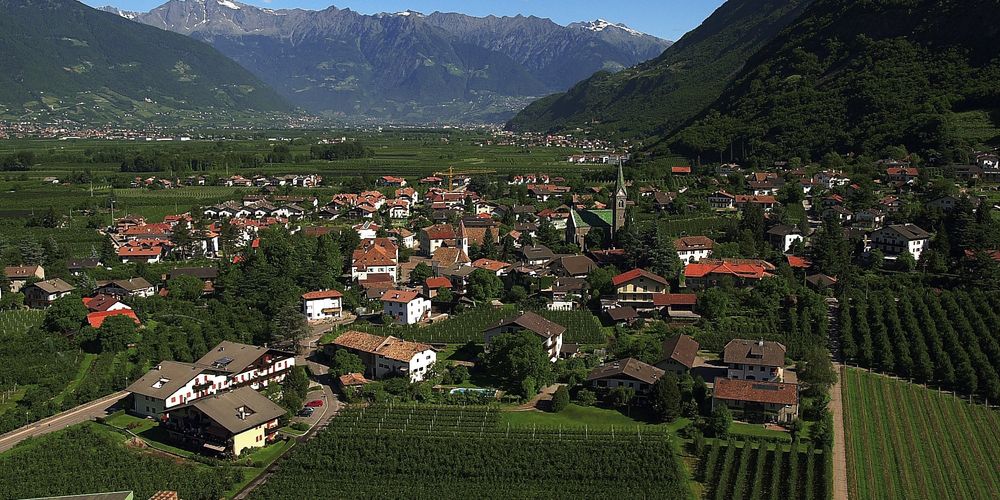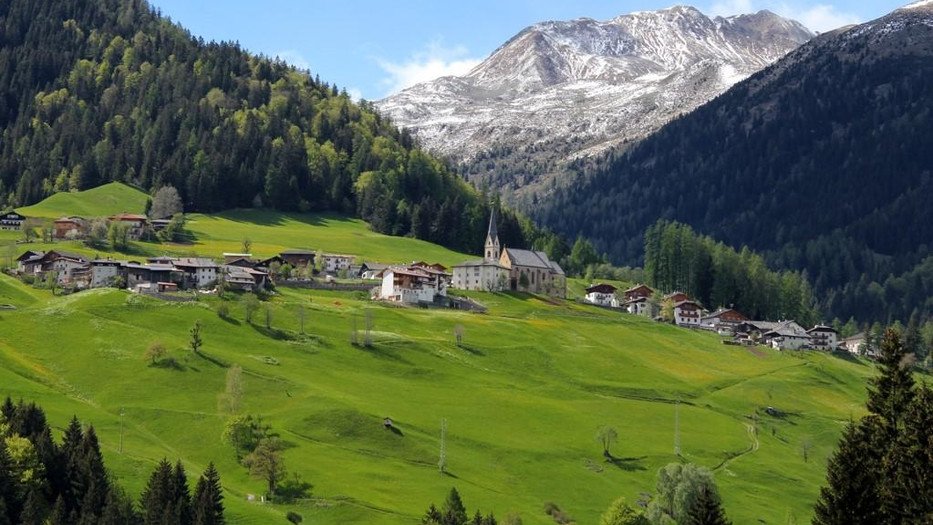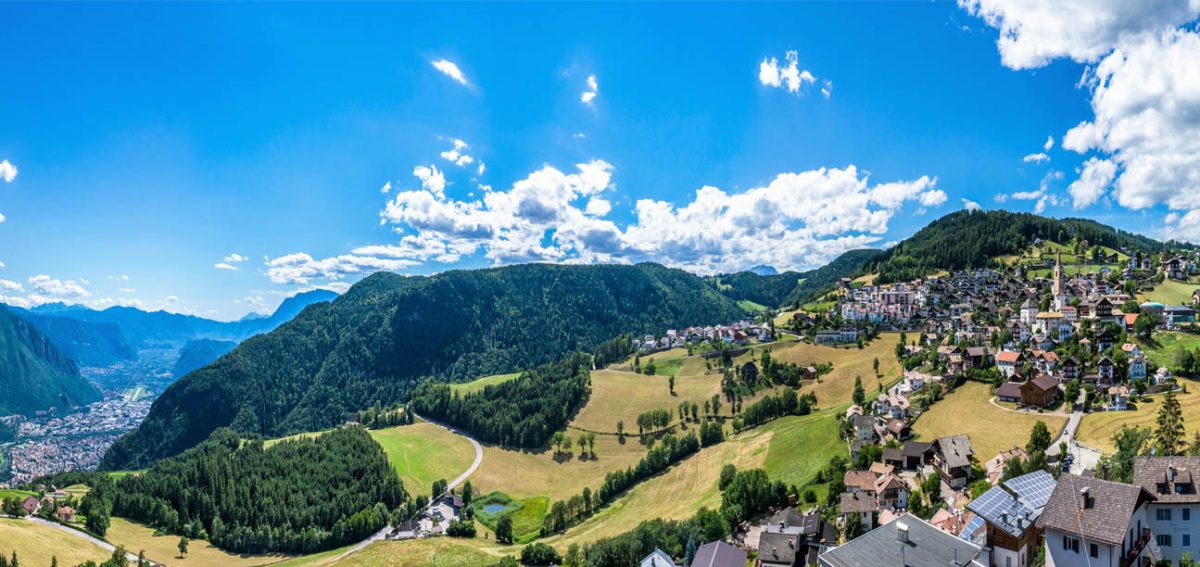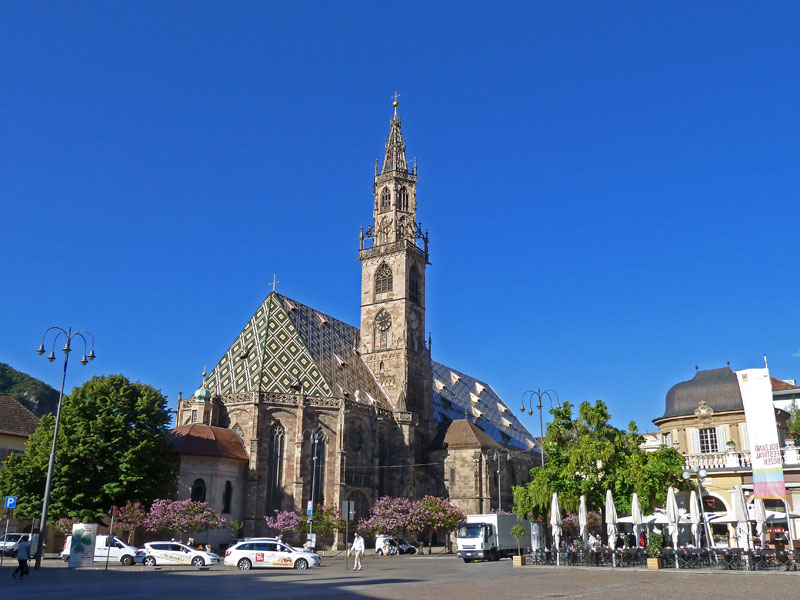How to reach Terlano
Attractions:
– Ruine of Castel Casanova – Maultasch
– Terlano parish church
The area around Terlano benefits from a very favourable climate. It is therefore not surprising that the oldest evidence of human settlements dates back to the Neolithic period, approximately 2000 years BC. The name Terlano is first recorded in 828 AD as “Taurane” and in 923 AD as “Torilan”. Over time, the name changed to become Terlano.
In the Middle Ages Terlano was home of the Casanova Court, an area that includes today’s villages of Terlano, Andriano, Nalles and Vilpiano. The last Tyrolean local regent, Margarethe von Görz-Tirol, because of her alleged misshapen mouth (Maul) also known as Margarethe Maultasch, may have lived in Castel Casanova above Terlano (there are no historic records of this). The castle is therefore better known as the ruin of Castel Maultasch than under its actual name.
In the 16th century the mining industry flourished in Terlano. The main product mined was galenite from which silver was extracted. However, because of poor yields the mine was later closed. The silver mine brought great wealth to Terlano, which is reflected in the magnificent building of the parish church with its precious Gothic frescoes.
Moments of pleasure in Terlano
Thanks to the fertile soil and Mediterranean climate, delicious fruit grows in Terlano, Vilpiano and Settequerce. The region is known as the asparagus triangle. It is also known for its crunchy apples and best grapes.
In the villages of Vilpiano, Settequerce and Terlano asparagus has been grown for centuries. In an area of 10 ha South Tyrolean asparagus growers grow high quality Terlano asparagus. Terlano asparagus has an elegant form and a mild flavour. Served with cold ham and Bolzano sauce Terlano asparagus is a pure culinary delight and highly popular during spring – especially accompanied by a glass of asparagus wine (Sauvignon Blanc). The quality assured Terlano asparagus is marketed under the royal name “Margarete”. The name of the South Tyrolean asparagus is derived from the last regent of Tirol, who is said also to have resided in the ruin of Castel Maultasch above Terlano.
For over 2000 years grapes have been cultivated in Terlano, Vilpiano and Settequerce, and wine has been produced. The Terlano winery is one of the best in the country and regularly receives numerous awards. Immerse yourself into the world of wine, follow the wine route and take part in wine tastings and conversations with wine growers. Prickling delights await you in the sparkling wine wineries.
Apples are – not only because of Adam and Eve – one of the oldest cultured fruit known to humans. King Ramses already valued the medicinal properties of this round fruit. It is said that an apple a day keeps the doctor away.
Apples contain 85% water, hardly any fat, but are full of valuable components such as vitamins, minerals and secondary plant substances. Their vitamin C content is particularly important: the average of 2 mg/100 g correspond to 15% of the recommended daily requirements. The constituents of this wonderful fruit fight against free radicals and therefore slow down the ageing process, keep the skin toned, reduce susceptibility to illness in general and to diabetes and cancer in particular, and can help prevent Alzheimer’s and Parkinson’s disease.
Because of this and because apples are simply part of South Tyrol and the holiday destinations Laives-Bronzolo-Vadena, everything here focuses on this round fruit.
Culture tips:
Quaint stories, interesting castles and more culture tips. Discover Terlano, Vilpiano, Settequerce during a Cul-Tour through the region. Enjoy the many fantastic experiences!









